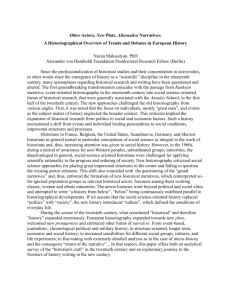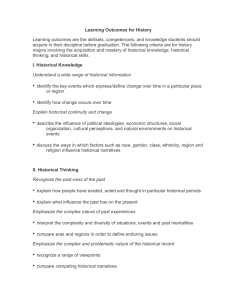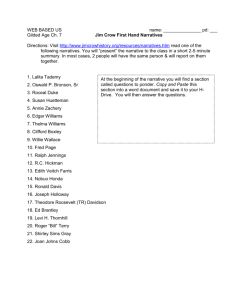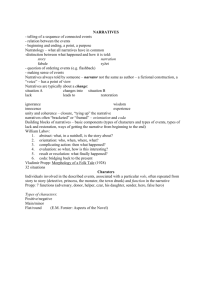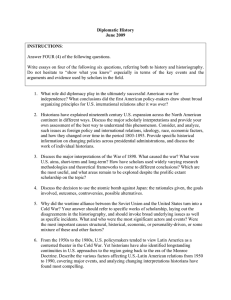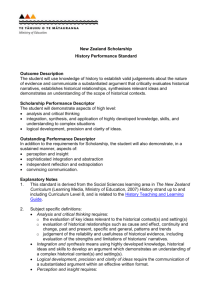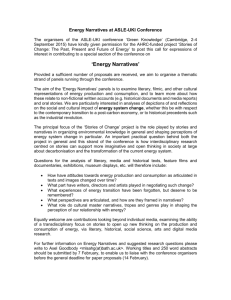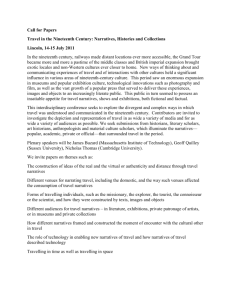AlagonaNotesToNarratives
advertisement
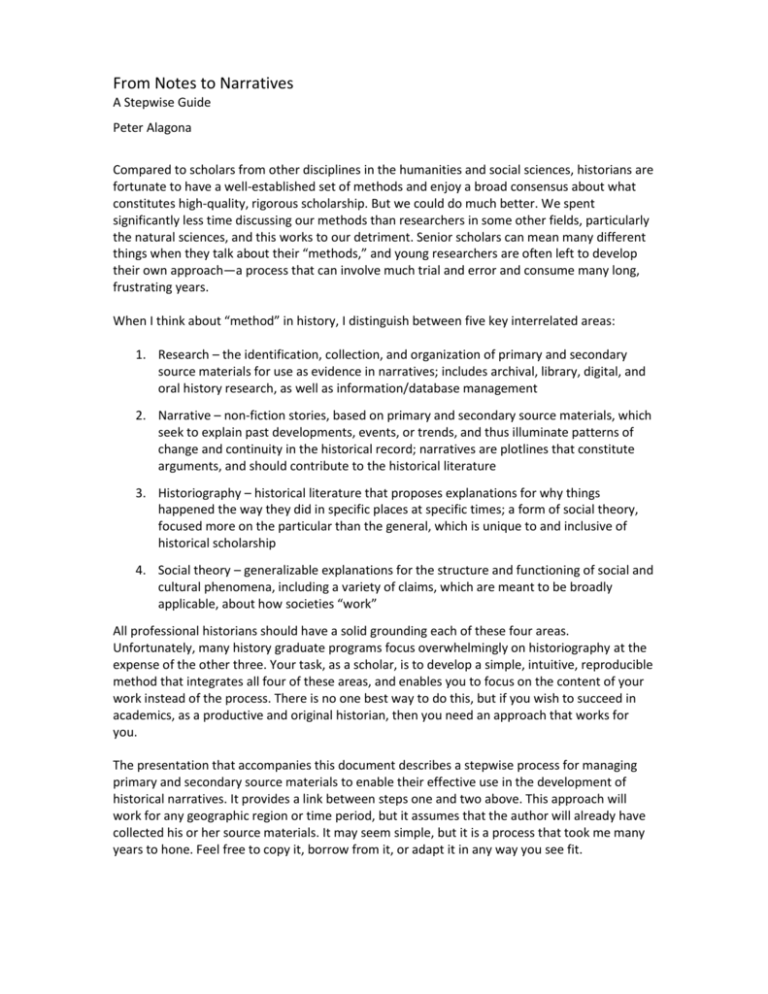
From Notes to Narratives A Stepwise Guide Peter Alagona Compared to scholars from other disciplines in the humanities and social sciences, historians are fortunate to have a well-established set of methods and enjoy a broad consensus about what constitutes high-quality, rigorous scholarship. But we could do much better. We spent significantly less time discussing our methods than researchers in some other fields, particularly the natural sciences, and this works to our detriment. Senior scholars can mean many different things when they talk about their “methods,” and young researchers are often left to develop their own approach—a process that can involve much trial and error and consume many long, frustrating years. When I think about “method” in history, I distinguish between five key interrelated areas: 1. Research – the identification, collection, and organization of primary and secondary source materials for use as evidence in narratives; includes archival, library, digital, and oral history research, as well as information/database management 2. Narrative – non-fiction stories, based on primary and secondary source materials, which seek to explain past developments, events, or trends, and thus illuminate patterns of change and continuity in the historical record; narratives are plotlines that constitute arguments, and should contribute to the historical literature 3. Historiography – historical literature that proposes explanations for why things happened the way they did in specific places at specific times; a form of social theory, focused more on the particular than the general, which is unique to and inclusive of historical scholarship 4. Social theory – generalizable explanations for the structure and functioning of social and cultural phenomena, including a variety of claims, which are meant to be broadly applicable, about how societies “work” All professional historians should have a solid grounding each of these four areas. Unfortunately, many history graduate programs focus overwhelmingly on historiography at the expense of the other three. Your task, as a scholar, is to develop a simple, intuitive, reproducible method that integrates all four of these areas, and enables you to focus on the content of your work instead of the process. There is no one best way to do this, but if you wish to succeed in academics, as a productive and original historian, then you need an approach that works for you. The presentation that accompanies this document describes a stepwise process for managing primary and secondary source materials to enable their effective use in the development of historical narratives. It provides a link between steps one and two above. This approach will work for any geographic region or time period, but it assumes that the author will already have collected his or her source materials. It may seem simple, but it is a process that took me many years to hone. Feel free to copy it, borrow from it, or adapt it in any way you see fit. A Six-Step Process Step 1: Read all of your sources, marking important passages as you go. For printed materials, highlight, flag, or make notes in the margins. For digital materials, use Adobe Acrobat, which enables highlighting, drawing, and note taking in PDF documents. Step 2: Build a database of relevant information, making a brief note for each marked passage in your sources. • • For your database, you can use any software you want. Citation-specific software is popular, as are free-form databases. There is often a trade-off between simplicity and functionality. After many elaborate but failed experiments, I finally went with the simplest possible option: Microsoft Word. Step 3: Organize your data into an annotated outline. • • • Start a new document for the outline, making sure to save your database for future reference. As you’re copying and pasting notes from the database into the outline, mark off each note to indicate that you have already used it. Structure your outline by paragraphs (numbers), key points (letters), and research notes from the database (bullets). Step 4: Begin writing your paper, using your outline as a guide. • • • • Check off the notes in your outline as you use them in the text, transferring them, intact, into a list of endnotes as you go. You may decide not to use all of your research notes. You may also find that some notes need to be moved to different sections and paragraphs. Keep your outline up-to-date. Step 5: Revise your paper, moving your research notes to their new appropriate locations as you go. • • It takes some discipline, but it’s best to continue to keep your outline up-to-date. It’s also a good idea to keep a folder with old versions of your paper, and save a new, dated version for each writing session. Step 6: Reformat your research notes into citations once you have a final version or your paper. • Be sure to save a final copy with the unformatted research notes, so you can retrace your steps if necessary.
